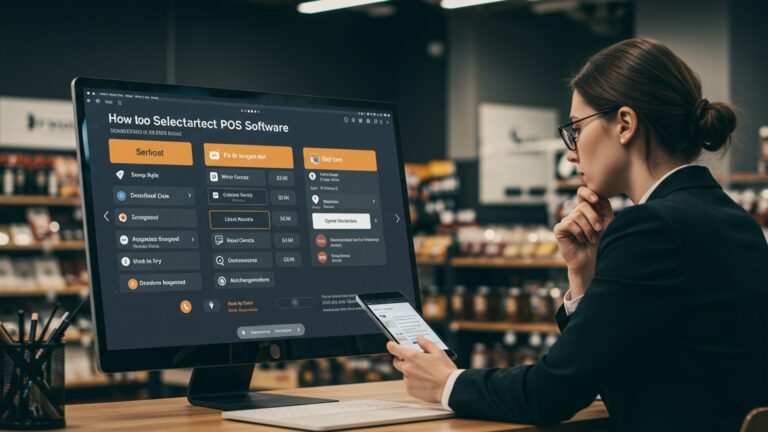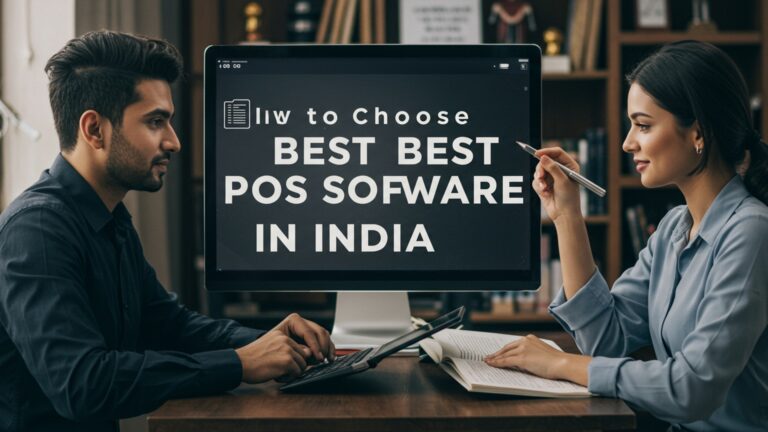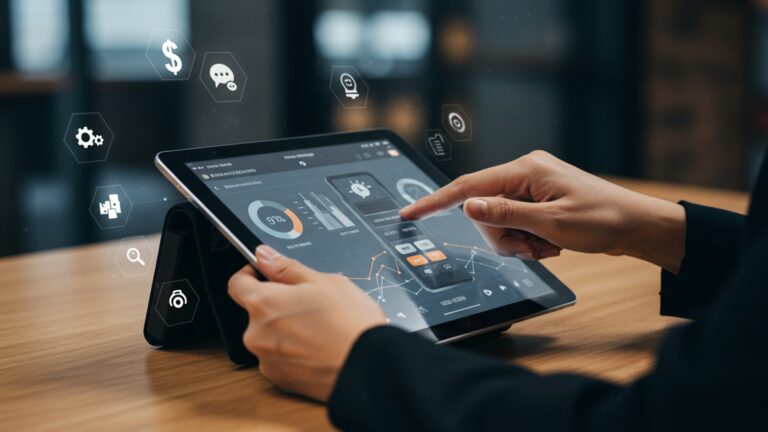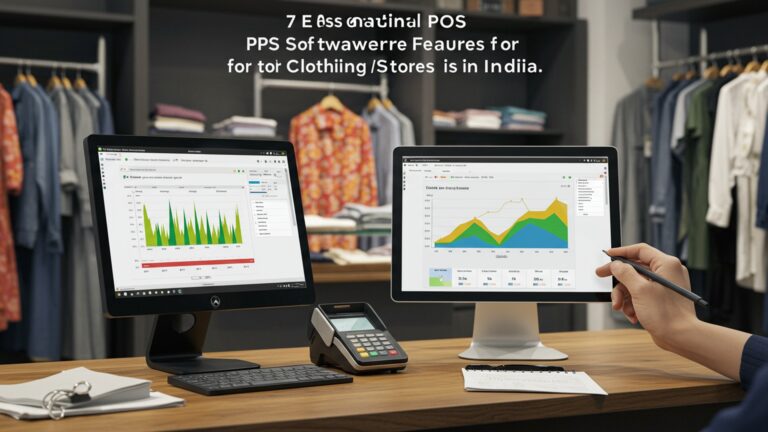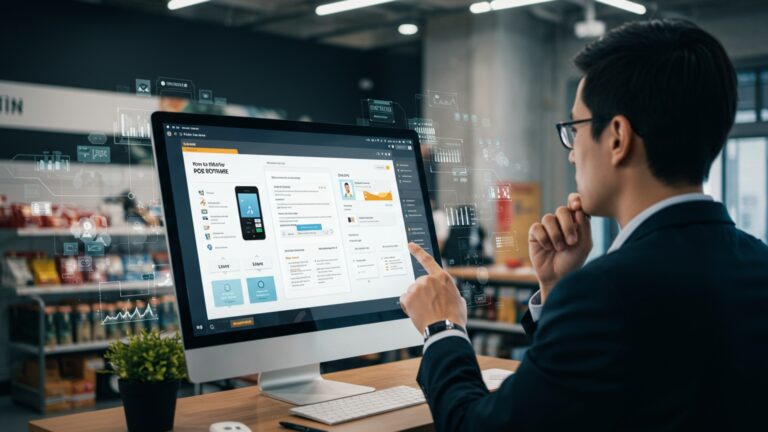How to Choose the Best POS Software for Your Grocery Store Business
In today’s hyper-competitive retail landscape, where online grocery delivery and self-checkout kiosks are standard, effective store management transcends basic transactions. Selecting the optimal pos software for grocery store operations is a strategic imperative, extending beyond sales to encompass real-time inventory tracking for perishable goods, dynamic pricing adjustments. robust customer loyalty programs. Recent advancements in cloud-based platforms offer scalable solutions, integrating contactless payments and AI-driven demand forecasting to minimize waste and personalize shopper experiences. This critical technological backbone empowers grocers to navigate volatile supply chains and elevate operational efficiency, directly impacting profit margins and customer retention.
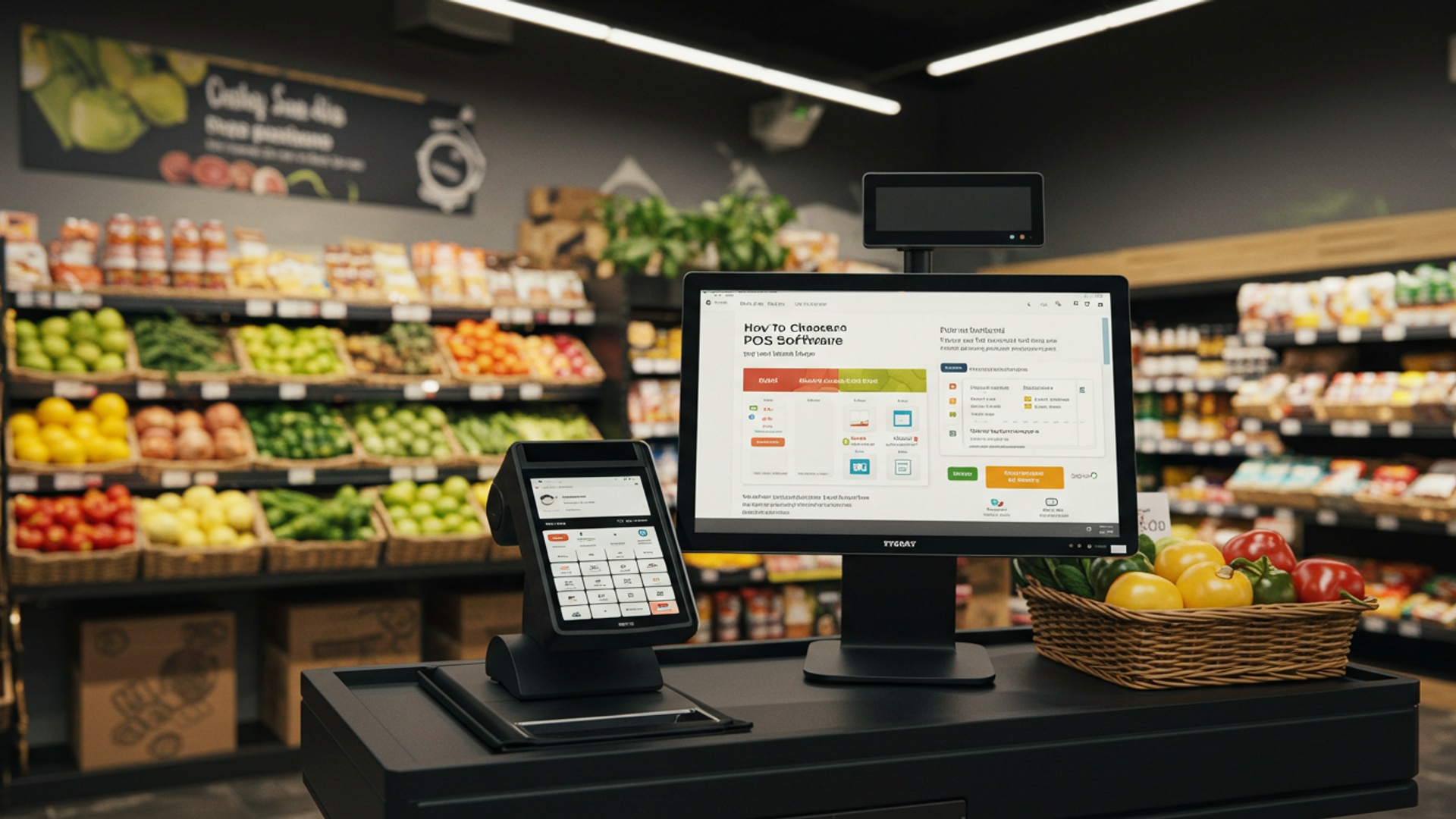
Understanding the Core of POS Software for Your Grocery Store
In the competitive landscape of the grocery business, efficiency and customer satisfaction are paramount. A robust Point of Sale (POS) system is no longer just a cash register; it’s the central nervous system of your operation. Specifically, dedicated pos software for grocery store environments is designed to handle the unique demands of fresh produce, bulk items, varied payment methods. high transaction volumes. It streamlines everything from scanning items and processing payments to managing inventory and tracking customer loyalty, fundamentally impacting your store’s profitability and operational flow.
At its heart, POS software integrates various functions to create a seamless transaction experience. When a customer checks out, the software identifies the product, calculates the price (including any discounts or promotions), processes the payment. updates inventory levels in real-time. This immediate data flow is critical for maintaining accurate stock counts and preventing stockouts, which can be particularly damaging in a grocery setting where perishable goods are common.
Key Features to Prioritize in Grocery POS Software
Choosing the right pos software for grocery store operations requires a careful evaluation of features that directly address your business’s specific challenges and opportunities. Here are the essential capabilities to look for:
- Advanced Inventory Management
- Integrated Scale Support
- Customer Relationship Management (CRM) & Loyalty Programs
- Robust Reporting and Analytics
- Employee Management
- Payment Processing Flexibility
- Multi-Store Capabilities
- E-commerce Integration
- Returns and Exchanges
- Offline Mode
This is arguably the most critical feature. Your POS should offer real-time tracking of inventory, including weighted items (produce, deli meats), batch and expiry date tracking for perishables. support for various units of measure (e. g. , per item, per pound, per dozen). It should also facilitate easy reordering, vendor management. transfer between multiple store locations if applicable.
For grocery stores, seamless integration with various weighing scales (e. g. , deli scales, produce scales) is non-negotiable. The software should be able to read weight directly from the scale and calculate prices accurately, minimizing manual errors and speeding up checkout times.
The ability to track customer purchase history, manage loyalty points, offer targeted promotions. collect customer data is invaluable for building customer loyalty and driving repeat business. Look for features like personalized discounts, digital coupons. gift card management.
Comprehensive reporting provides insights into sales trends, peak hours, popular products, employee performance. inventory turnover. This data is crucial for making informed business decisions, optimizing staffing. improving merchandising strategies.
Features like time clock functionality, shift scheduling, permission levels for different roles. sales performance tracking help manage your team efficiently and reduce administrative overhead.
The software must support a wide range of payment methods, including credit/debit cards, mobile payments (Apple Pay, Google Pay), EBT (Electronic Benefit Transfer). contactless payments. Ensure it is EMV-compliant for security and fraud prevention.
If you operate or plan to expand to multiple locations, your POS software should offer centralized management for inventory, pricing, promotions. reporting across all stores.
With the rise of online grocery shopping and delivery, integration with an e-commerce platform is becoming increasingly vital. This allows you to manage online and in-store orders from a single system, streamlining fulfillment.
A smooth process for returns and exchanges, including partial returns and store credit options, enhances customer satisfaction.
Essential for maintaining operations during internet outages, ensuring transactions can still be processed and data synced once connectivity is restored.
Evaluating Your Grocery Store’s Unique Needs
Before diving into specific software options, take a step back and thoroughly assess your grocery store’s unique operational requirements and challenges. This self-assessment will guide your selection process for the best pos software for grocery store use.
- Store Size and Volume
- Budget Constraints
- Current Pain Points
- Future Growth Plans
- Hardware Compatibility
A small corner store will have different needs than a large supermarket. Consider your average transaction volume, the number of SKUs you manage. how many checkout lanes you operate.
POS software comes with various pricing models, including one-time purchases, monthly subscriptions. transaction-based fees. Factor in not just the software cost. also hardware, installation, training. ongoing support.
Identify what inefficiencies your current system (or lack thereof) creates. Are you struggling with inventory accuracy? Slow checkout lines? Difficulty tracking customer preferences? Your new POS should directly address these issues.
Choose a system that can scale with your business. If you plan to open more locations, introduce online ordering, or expand product lines, ensure the software can accommodate these future developments without a complete overhaul.
Do you have existing hardware (scanners, receipt printers, cash drawers) you wish to integrate, or will you need a complete hardware package? Ensure the chosen software is compatible or comes with suitable hardware options.
Deployment Options: On-Premise vs. Cloud-Based POS
When selecting pos software for grocery store businesses, a fundamental decision involves the deployment model: on-premise or cloud-based. Each has distinct advantages and disadvantages.
<h3>Comparison Table: On-Premise vs. Cloud-Based POS</h3> <table border="1"> <thead> <tr> <th>Feature</th> <th>On-Premise POS</th> <th>Cloud-Based POS</th> </tr> </thead> <tbody> <tr> <td><strong>Data Storage</strong></td> <td>Stored locally on your servers. </td> <td>Stored on remote servers accessible via the internet. </td> </tr> <tr> <td><strong>Cost Structure</strong></td> <td>Higher upfront cost (software license, servers, IT staff). Lower ongoing fees. </td> <td>Lower upfront cost. Monthly/annual subscription fees. </td> </tr> <tr> <td><strong>Accessibility</strong></td> <td>Limited to your store network. Remote access requires VPN. </td&;gt <td>Access data and reports from anywhere with an internet connection. </td> </tr> <tr> <td><strong>Maintenance & Updates</strong></td> <td>You are responsible for updates, backups. IT security. </td> <td>Vendor handles maintenance, updates. data backups automatically. </td> </tr> <tr> <td><strong>Scalability</strong></td> <td>Can be challenging and costly to scale (requires more hardware). </td> <td>Easily scalable to accommodate business growth (add more users/locations). </td> </tr> <tr> <td><strong>Security</strong></td> <td>You control security. Requires robust internal IT expertise. </td> <td>Vendor is responsible for security. Often has advanced security measures. </td> </tr> </tbody> </table>
For most modern grocery stores, especially those seeking flexibility, remote access. lower upfront costs, cloud-based solutions are often preferred. They also tend to receive more frequent feature updates and security patches automatically.
Essential Integrations for Grocery Operations
The true power of pos software for grocery store environments lies in its ability to integrate seamlessly with other critical business tools. These integrations create a unified ecosystem, eliminating manual data entry and improving accuracy.
- Payment Terminals
- Accounting Software
- E-commerce Platforms
- Employee Scheduling Software
- Supplier and Distributor Systems
Integration with EMV-compliant card readers and mobile payment devices is fundamental. This ensures secure transactions and compliance with industry standards like PCI DSS (Payment Card Industry Data Security Standard).
Connecting your POS with accounting platforms like QuickBooks or Xero automates financial reconciliation, tracks sales data. simplifies tax preparation, saving significant time for your bookkeeping staff.
If you offer online ordering or curbside pickup, direct integration ensures that inventory is synchronized across all channels and online orders flow directly into your fulfillment system.
Integration can automatically feed sales data into scheduling tools, helping you optimize staffing levels based on predicted demand and manage payroll more efficiently.
Advanced integrations can automate purchase orders, receive electronic invoices. even suggest reorder points based on real-time sales data, streamlining your supply chain.
Consider a medium-sized grocery store that integrates its POS with an e-commerce platform. When a customer places an online order for a specialty cheese, the POS immediately adjusts the inventory count. At checkout, if the same cheese is purchased in-store, the system reflects the updated stock, preventing overselling and ensuring accurate stock for both online and physical customers. This level of synchronization is invaluable.
Security and Compliance Considerations
In an era of increasing cyber threats, the security of your POS system and customer data is paramount. When selecting pos software for grocery store use, pay close attention to its security features and compliance with industry regulations.
- PCI DSS Compliance
- Data Encryption
- User Access Controls
- Regular Backups
- Fraud Prevention
Ensure the POS software and its integrated payment processor are fully compliant with PCI DSS standards. This protects sensitive cardholder data from breaches.
All transaction data, both in transit and at rest, should be encrypted to prevent unauthorized access.
The software should allow you to set detailed permission levels for different employees, ensuring that only authorized personnel can access sensitive functions or data.
For cloud-based systems, verify the vendor’s backup protocols. For on-premise solutions, establish your own robust backup and disaster recovery plan.
Look for features like EMV chip card processing, tokenization. built-in fraud detection tools to minimize chargebacks and protect your business.
A real-world example demonstrates this importance: A small grocery chain experienced a data breach due to an outdated POS system. Customer credit card details was compromised, leading to significant financial losses, reputational damage. legal fees. Upgrading to a modern, secure. PCI-compliant pos software for grocery store use is not just an expense. a crucial investment in protecting your business and your customers.
Vendor Support, Training. Long-Term Partnership
The relationship with your POS vendor extends far beyond the initial purchase. Excellent support and comprehensive training are critical for maximizing your investment in pos software for grocery store operations.
- 24/7 Technical Support
- Training Resources
- Software Updates and Enhancements
- Reputation and Reviews
Grocery stores often operate outside standard business hours. Ensure the vendor offers reliable, round-the-clock support for any technical issues that may arise.
Look for vendors who provide thorough training materials, online tutorials. even on-site training for your staff. User-friendly interfaces are a plus. proper training ensures everyone can use the system effectively.
A good vendor continuously updates their software with new features, security patches. performance improvements. comprehend their update schedule and how these are deployed.
Research the vendor’s reputation. Read online reviews, case studies. talk to other grocery store owners who use their system. A vendor with a proven track record of reliability and customer satisfaction is a safer bet.
Actionable Steps for Selecting Your POS Software
Navigating the options for pos software for grocery store businesses can be daunting. Here’s a structured approach to make an informed decision:
- Define Your Requirements
- Research Potential Vendors
- Request Demos
- Check References
- Review Pricing Models
- Test the System
- Evaluate Support and Training
- Consider Scalability and Future-Proofing
- Negotiate Terms
- Make Your Decision
Create a detailed list of essential features, desired integrations. budget constraints based on your needs assessment.
Identify 3-5 vendors that specialize in grocery POS solutions and meet your initial criteria.
Schedule personalized demonstrations with each vendor. Ask specific questions relevant to your store’s operations (e. g. , “How does your system handle weighted produce?” , “Can I easily set up a BOGO promotion?”).
Ask vendors for references from similar grocery businesses. Contact these references to get honest feedback on the software and support.
grasp the total cost of ownership, including software licenses/subscriptions, hardware, installation, training. ongoing support fees. Watch out for hidden costs.
If possible, ask for a trial period or a sandbox environment where you can test the software with your own products and scenarios.
Assess the quality of customer support during your evaluation process. How responsive are they? How comprehensive are their training resources?
Choose a system that can grow with your business and adapt to future technological changes.
Don’t hesitate to negotiate pricing, support packages. contract terms.
Based on your thorough evaluation, select the pos software for grocery store that best aligns with your business goals and operational needs.
By following these steps, you can confidently choose a POS system that not only streamlines your current operations but also positions your grocery store for future success and growth.
Conclusion
Choosing the ideal POS software for your grocery store transcends mere transaction processing; it’s about strategically empowering your entire operation. My personal tip? Beyond feature lists, always insist on a comprehensive, hands-on trial. Simulate peak hours, process returns. even conduct a ‘mystery shop’ of your own system before committing. I once witnessed a local specialty grocer transform their customer flow and inventory accuracy by adopting a system that seamlessly integrated real-time stock updates with their loyalty program, a crucial modern trend. Embracing cloud-based solutions with robust inventory management and customer relationship features isn’t just about convenience; it’s about future-proofing your business in a competitive market. This diligent selection process now will pay immense dividends, ensuring smooth operations, reducing waste. ultimately fostering customer loyalty. Remember, your POS is a foundational investment in sustainable growth and operational peace of mind. Make that investment wisely. watch your grocery store thrive. For more insights into maximizing your retail efficiency, explore how to Boost Your Retail Profits How to Optimize Inventory Using POS Software.
More Articles
Boost Your Retail Profits How to Optimize Inventory Using POS Software
A Practical Guide to Mastering Business Operations with POS Software
The Ultimate Guide to Understanding Essential POS Software Features
Learn How Smart POS Billing Software Boosts Business Efficiency
Your Complete Guide to Integrated Billing and POS Software
FAQs
I’m just starting my search for POS software for my grocery store. What are the absolute must-have features I should prioritize?
Focus on robust inventory management, especially for perishables and high-volume items. Quick and accurate barcode scanning, integrated payment processing. detailed sales reporting are also non-negotiable. Don’t forget features like customer loyalty programs and the ability to handle various product types, including weighed items and bulk goods.
My store deals a lot with fresh produce and other perishable goods. How can POS software help me manage that efficiently?
Look for software that offers advanced inventory tracking with expiration dates, batch tracking. tools for managing returns or spoilage. Some systems even have features to help optimize ordering based on sales trends to minimize waste and ensure your shelves are always stocked with fresh items.
My staff aren’t tech wizards. Is it possible to find POS software that’s easy to learn and use without a huge training curve?
Absolutely! Prioritize systems with intuitive interfaces, clear button layouts. minimal steps for common transactions. A good POS should be designed for speed and ease of use, reducing checkout times and errors. Many providers offer training resources. a user-friendly system will significantly cut down on staff training time.
What if my grocery store grows or I open another location down the line? Can my POS system grow with me?
Yes, scalability is crucial! Choose a cloud-based system that can easily add new registers, users, or even entire store locations under one central management system. This ensures you won’t outgrow your software and have to go through the entire selection process again later, saving you time and money.
POS systems can get expensive. What should I consider regarding the overall cost, beyond just the monthly fee?
Think about the total cost of ownership. This includes not just the monthly or annual subscription. also hardware costs (scanners, receipt printers, cash drawers), setup fees, training. ongoing support. Some systems have hidden fees for extra features or integrations, so get a clear, itemized breakdown upfront to avoid surprises.
How can POS software help me keep my customers coming back and build loyalty?
Look for integrated customer relationship management (CRM) features. This allows you to track purchase history, manage loyalty points or reward programs. even send targeted promotions directly to your customers. A faster, smoother checkout experience itself also contributes greatly to customer satisfaction and repeat business.
What kind of support should I expect, especially if something goes wrong during a busy shift?
Excellent customer support is crucial. Look for providers that offer 24/7 support, multiple contact methods (phone, email, chat). a good reputation for quick response times. Also, check if they offer on-site support or have a robust knowledge base for self-troubleshooting. Downtime for a grocery store can be very costly.


